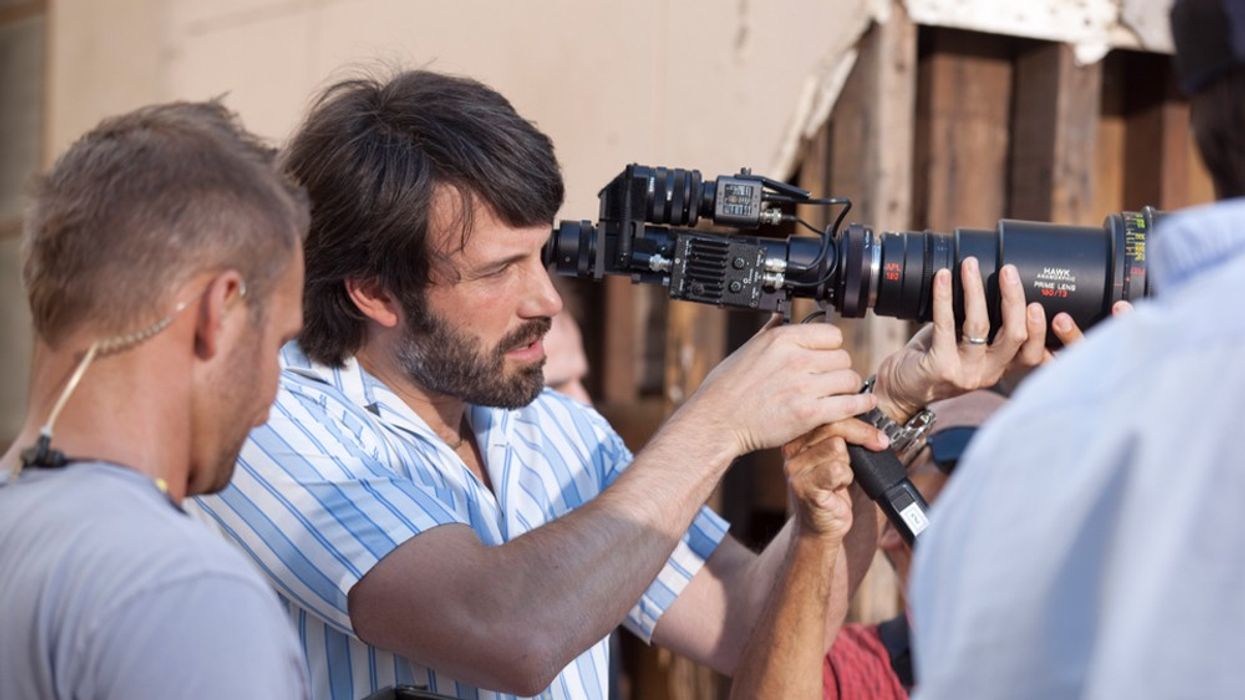Is A Traditional Director's Viewfinder Still Part of Your Toolkit?
Are traditional director's viewfinders still a viable option?

Our inbox was hit with news about a new full-frame director's viewfinder from Optica Mangus aptly named the Optica Magnus Full Frame Finder. It's a traditional optical viewfinder compatible with sensors up to 46.31mm, which includes Super 35, full-frame, ARRI LF, RED Vista Vision, Sony VENICE, etc. "Oh great."
The release said it can be used with spherical or anamorphic lenses, supporting squeeze factors of 1.5x and 1.9x with an anamorphic module. The eyepiece can also be changed out to be compatible with Super 35 lenses. The one standout feature is that it can be used with custom frame lines. It works via an app, where the aspect ratio is printed on an acetate slide which can then be placed on top of the ground glass. Cool. So, basically any aspect ratio imaginable. Want to mimic 1:1.19 which DP Jarin Blaschke used on The Lighthouse? Go ahead.

The Full Frame Finder is being supported by the great people over at P+S Technik, so it's equipped with the P+S Interchangeable Mount System (IMS). This provides 10 different lens mounting options, so the sky is the limit in terms of compatible lenses. It features remind me of the Love High Speed Full Frame Director's Viewfinder. "Let's see how much the Optima Magnus costs? $10,000? Ah, crap."
How can you justify $10K for a director's viewfinder? When comparing it to the cost of an ARRI or RED camera, it's nothing. Same with lenses.
The price is of the viewfinder from Optica Magnus is competitive to Kish's viewfinder and others. Plus, the company has an excellent line of lens expanders. Expanders work opposite to speed boosters, like those from Metabones. The latter allows full-frame lenses to be mounted to a smaller APS-C or Micro Four Thirds sensor. Expanders let lenses with smaller image circles to be used on large sensors.
Are traditional director's viewfinders still viable in your worfklow?
Sigma is trying a different route with the fp that ties in the full-frame mirrorless camera with a director's viewfinder module. No Film School has also talked about the Artemis Pro Director's Viewfinder app. In the past, the Alan Gordon Mark Vb seemed to be wrapped around every director's neck. Same with a Denz or Canavision viewfinder. IBE Optics has its Smartfinder Pro and standalone app. Cardage is another solid app option. Plus, there are dozens of other director's viewfinder apps available for download, too. Digital cameras themselves are serving as viewfinders, but is that limited to indie filmmaking? Deakins used a Sony alpha camera to match the sensor of the ARRI LF to plot out 1917, so maybe not.
So, we're curious. What are you using as a director's viewfinder, if anything at all? What do you use as a reference framing too? Are you still seeing director's viewfinders in prep or on set? Let us know in the comments below.











